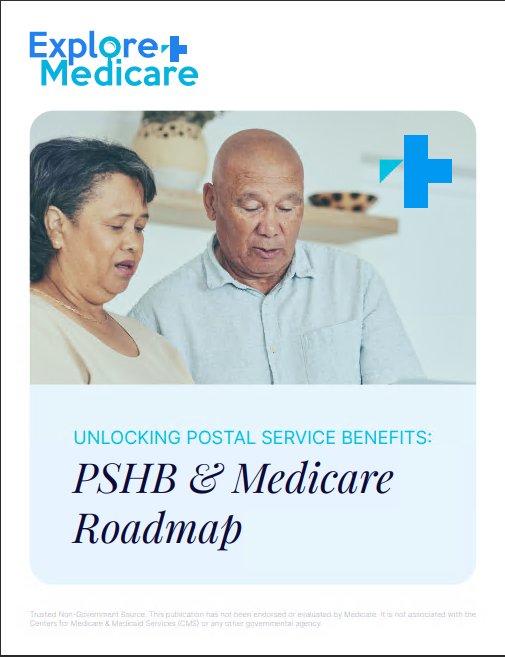Key Takeaways
-
Coordinating Medicare with your employer health plan can help reduce your overall healthcare costs while avoiding unnecessary gaps in coverage.
-
Understanding the rules about Medicare and employer coverage can help you make informed decisions about enrollment timelines and benefits.
Do You Need Medicare If You Have Employer Coverage?
If you’re still working and have health insurance through your employer, you might wonder whether you need to enroll in Medicare. The answer depends on the size of your employer and the specific coverage your plan provides. Employers with fewer than 20 employees often require you to enroll in Medicare as your primary insurance. In contrast, if your employer has 20 or more employees, your employer plan generally serves as the primary insurance, with Medicare playing a secondary role.
The timing of when you enroll matters too. If you’re eligible for Medicare but don’t sign up during your Initial Enrollment Period (IEP) or when you lose employer coverage, you may face penalties that last for as long as you’re enrolled.
What Happens When Medicare Becomes Primary?
When Medicare is your primary insurance, it pays first for your healthcare services, and your employer’s plan will only cover costs that Medicare doesn’t. This arrangement works particularly well for people who want to maximize their coverage while keeping costs low. For example, Medicare often covers a wide range of hospital and medical services, reducing your out-of-pocket expenses. If your employer coverage has high deductibles or coinsurance, Medicare’s coverage can help offset these costs.
However, remember that Medicare doesn’t cover everything. Services like dental, vision, and hearing care often require separate plans or additional coverage through employer benefits.
Employer Size Determines Your Medicare Role
The size of your employer dictates whether Medicare acts as primary or secondary coverage. Here’s how it breaks down:
-
Small Employers (Fewer than 20 Employees): Medicare is typically primary, and the employer plan acts as a backup. You’ll need to enroll in Medicare Part A (Hospital Insurance) and Part B (Medical Insurance) when you first become eligible.
-
Large Employers (20 or More Employees): Your employer’s plan is primary, and Medicare is secondary. You can often delay Part B enrollment without facing penalties if you’re still working and have credible coverage.
Understanding these roles ensures you’re not paying for duplicate coverage and helps you avoid any penalties.
Should You Delay Medicare Enrollment?
If you’re covered by a large employer’s health plan, you might consider delaying Medicare Part B enrollment to avoid paying the monthly premium. However, delaying isn’t always the best move. Some employer plans may not cover all the services Medicare provides, leaving gaps in your coverage. For instance, Medicare Part B often covers outpatient services and preventive care that employer plans might limit.
Additionally, if you lose your employer coverage and miss the Special Enrollment Period (SEP) to sign up for Medicare, you could face late enrollment penalties. These penalties are added to your premium and last a lifetime, so timing is everything.
Balancing Medicare and Health Savings Accounts (HSAs)
If you have a Health Savings Account (HSA) through your employer, coordinating it with Medicare requires careful planning. Once you enroll in Medicare, you can no longer contribute to your HSA. However, you can use the existing funds in your HSA to pay for qualified medical expenses, including Medicare premiums, deductibles, and copayments.
To avoid tax penalties, stop contributing to your HSA at least six months before enrolling in Medicare Part A or Part B. This is because Medicare Part A retroactively starts up to six months prior to your application date, which could inadvertently lead to excess contributions.
Can Medicare and Employer Coverage Work Together?
Yes, Medicare and employer health plans can complement each other, but coordination is key. When combined effectively, this pairing can help you save on out-of-pocket costs. For instance:
-
Prescription Drugs: Employer plans often include comprehensive drug coverage, so you may not need to enroll in a Medicare Part D plan.
-
Outpatient Services: Medicare Part B covers services like diagnostic tests and therapy that might require higher copayments under employer plans.
-
Hospital Stays: Medicare Part A can cover hospital costs that exceed your employer plan’s benefits.
Understanding which plan pays first and which pays second ensures you’re maximizing the benefits from both plans.
How to Transition From Employer Coverage to Medicare
When it’s time to leave your job or retire, you’ll need to transition from employer coverage to Medicare seamlessly. Here’s a simple step-by-step approach:
-
Check Your Special Enrollment Period (SEP): You have an eight-month SEP to enroll in Medicare after losing employer coverage. This includes Parts A, B, and D.
-
Review COBRA Options: If your employer offers COBRA, remember that it doesn’t count as credible coverage for Medicare. Enroll in Medicare to avoid penalties.
-
Coordinate Coverage: If you’re switching to Medicare as primary coverage, ensure all healthcare providers accept Medicare to avoid unexpected bills.
Common Pitfalls to Avoid
While coordinating Medicare with employer health plans can be beneficial, it’s not without challenges. Watch out for these common mistakes:
-
Delaying Enrollment: Failing to enroll in Medicare when required can result in costly penalties and gaps in coverage.
-
Assuming Coverage Overlaps: Just because you have employer insurance doesn’t mean it covers everything Medicare does. Gaps can leave you exposed to high costs.
-
Overlooking Coordination Rules: If you don’t know which plan pays first, you might end up with unpaid claims or duplicate coverage.
Staying informed can help you avoid these issues and get the most out of your benefits.
Maximizing Benefits During Open Enrollment
Each year, Medicare and employer health plans often update their benefits and costs. During the Medicare Open Enrollment Period (October 15 to December 7) and your employer’s open enrollment period, take time to review your options. Consider:
-
Premium Costs: Compare the costs of Medicare and employer plan premiums to determine the best value.
-
Coverage Details: Look at what each plan covers to avoid duplicating coverage.
-
Prescription Drug Plans: Ensure your medications are covered under your chosen plan.
Making informed choices during these periods can save you money and improve your overall healthcare experience.
Special Enrollment Periods: What You Need to Know
If you’re transitioning from employer coverage to Medicare, understanding your Special Enrollment Period (SEP) is crucial. The SEP allows you to enroll in Medicare without penalties after losing employer coverage. This eight-month window starts the month after your employment or group health coverage ends, whichever comes first.
Missing this period could mean waiting until the General Enrollment Period (January 1 to March 31) to sign up, with coverage beginning in July and potential late enrollment penalties.
Why Timing Matters
Getting the timing right when coordinating Medicare with your employer health plan is critical. Here’s why:
-
Avoiding Gaps: Delays in enrollment can leave you temporarily without coverage.
-
Preventing Penalties: Late enrollment penalties for Part B and Part D can add up and last a lifetime.
-
Maximizing Benefits: Enrolling on time ensures you can take full advantage of Medicare’s benefits while minimizing costs.
Know Your Rights and Responsibilities
As someone eligible for Medicare, you have specific rights and responsibilities. These include:
-
Guaranteed Coverage: You can’t be denied Medicare coverage because of pre-existing conditions.
-
Coordination of Benefits: Medicare and employer plans must work together to process claims correctly.
-
Appeals: You have the right to appeal decisions if claims are denied or coverage is unclear.
Being proactive and informed helps you navigate these rights effectively.
Getting Expert Help
If you’re unsure how to coordinate Medicare with your employer coverage, consider reaching out to a benefits counselor or Medicare representative. They can clarify enrollment timelines, costs, and coverage rules, helping you make informed decisions. Medicare’s official resources and your employer’s benefits office are also excellent places to start.
Make the Most of Medicare and Employer Coverage
By understanding how Medicare and employer health plans work together, you can reduce costs and avoid common pitfalls. Be proactive about enrollment timelines, review your coverage options annually, and don’t hesitate to seek expert advice when needed. A little planning now can lead to big savings and peace of mind in the future.









